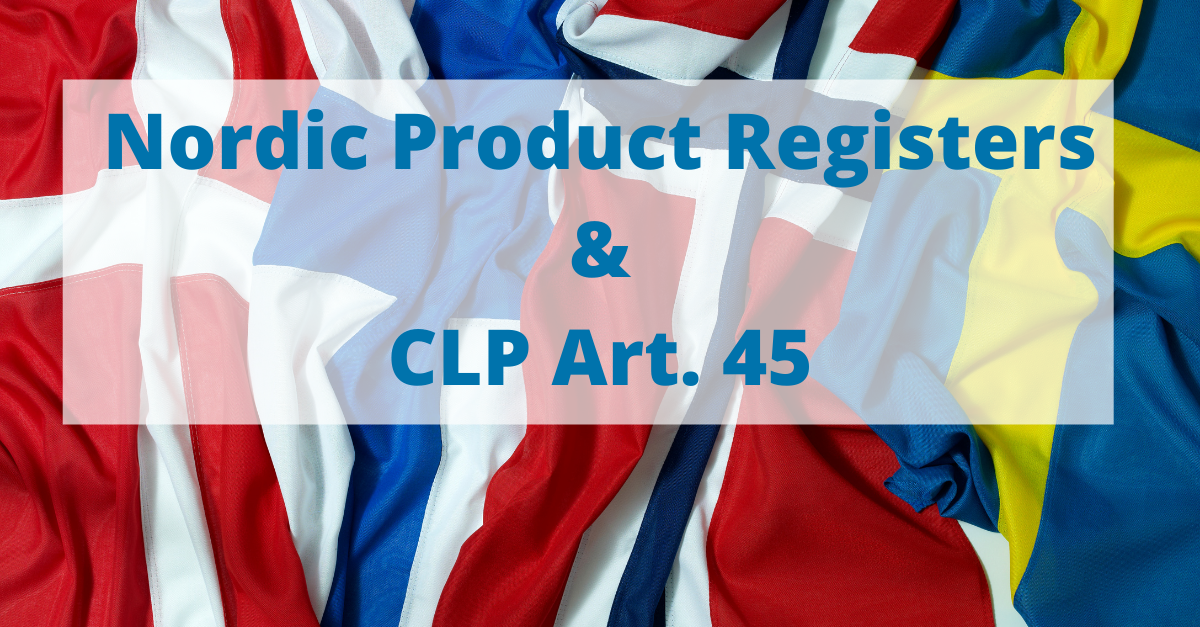CLP Amendment: Impact on Notifications to the C&L Inventory

On 20th November 2024, the Regulation (EU) 2024/2865 was published and is in force since 10th December. It amends Regulation (EC) No 1272/2008 (CLP Regulation) and introduces new requirements for notifications to the Classification and Labelling (C&L) Inventory, which are defined in Article 40.
All new provisions derived from Article 40 revision shall apply from 1st of July 2026. This also includes amendments to Article 42 concerning the public availability of notifier identities and confidentiality provisions.
These changes aim to improve the C&L Inventory as a substance hazard communication tool and resolve hazard classification discrepancies, leading to a more robust and reliable regulatory framework.
By making notifier identities publicly available, implementing stricter confidentiality controls, and requiring notifiers to work toward agreed classification entries, the revised regulation establishes a more transparent and reliable regulatory framework for chemical safety.
In the following sections, we explain the most relevant aspects of the C&L Inventory changes and how they affect manufacturers and importers placing hazardous substances on the market.
- Key changes related to the C&L Inventory
- New paradigm: notifiers identity publicly available
- New responsibilities: addressing classification inconsistencies
- Take action and prepare for change
Key Changes Related to the C&L Inventory
Identity of Notifier
The recent amendment to the CLP Regulation introduces significant changes that aim to enhance transparency while facilitating collaboration among notifiers to achieve harmonized classification entries.
Under the amended Article 42, the European Chemicals Agency (ECHA) is now required to make the identity of the importer or manufacturer submitting the information publicly available as part of the C&L Inventory. While advancing transparency, the amendment continues to uphold safeguards for legitimate commercial interests.
Notifiers may claim confidentiality for information referred to in Article 40(1)(a) if they can duly justify that publishing the information would be potentially harmful to their commercial interests or those of other concerned parties.
To support these changes, ECHA will clarify the grounds for legitimate confidentiality claims, actively monitor for unjustified claims through automated and manual checks, and request corrections when entries are found to be incomplete, incorrect, or outdated.
This increased in transparency aims to foster an environment where notifiers can identify other companies working with the same substances and engage in collaborative efforts to develop harmonized classifications.
Acute Toxicity Estimation (ATE)
ATEs have always been an integral part of the CLP framework. These estimates are primarily used to determine acute toxicity classifications for human health when assessing mixtures containing substances classified for acute toxicity. Acute toxicity values are typically expressed as LD50 (oral, dermal) or LC50 (inhalation) values, or as acute toxicity estimates (ATEs).
This regulation amendment introduces a formal definition of ATE: numeric values used to classify substances and mixtures in one of four acute toxicity hazard categories based on the oral, dermal or inhalation exposure route.
 Under the revised Article 40, manufacturers and importers must establish and notify the ATE values for all substances classified for acute toxicity, regardless of hazard category. In the same way as M-factors and concentration limits, acute toxicity estimates should be now part of the C&L notifications to ECHA.
Under the revised Article 40, manufacturers and importers must establish and notify the ATE values for all substances classified for acute toxicity, regardless of hazard category. In the same way as M-factors and concentration limits, acute toxicity estimates should be now part of the C&L notifications to ECHA.
This requirement ensures more precise hazard classifications based on specific data rather than generalized assessments, leading to a more accurate reflection of risk levels.
Hazard Classification Divergence
A key update introduced by the regulation under Article 40 is the requirement for companies to justify classification divergences.
When a company introduces a hazard classification that differs from the most severe classification already listed in the harmonized classification and labelling of substances in Part 3 of Annex VI, they must now explain their reasons for divergence.
This also applies to cases where a more severe classification per hazard class is proposed aiming to ensure scientific accuracy and consistency throughout the inventory.
New Paradigm: Notifiers Identity Publicly Available
The revised Article 42 introduces a fundamental shift in the transparency framework governing classification and labelling (C&L) notifications.
The rationale behind this changes centers on facilitating the notifiers' duty to reach agreed notification entries for the same substance. By making notifier identities publicly available, the regulation enables companies to identify and contact other notifiers of the same substance, thereby promoting dialogue and coordination that can lead to harmonized classifications.
The amendment specifies that all information notified to ECHA's C&L inventory should be made publicly available free of charge, including:
- the information referred to in Article 40(1)(a),
- the identity of the importer or manufacturer submitting information on behalf of group members in cases of group notifications (For group notifications, the regulation adopts a practical approach by requiring disclosure of only the lead notifier's identity.),
- information corresponding to Article 119(1) of REACH Regulation (EC) No 1907/2006, and
- the date of the latest classification and labelling update.
Impact on Companies
This paradigm shift creates substantial operational implications for companies. From a practical perspective, companies must fundamentally reassess their approach to C&L notifications, moving from a traditionally discrete process to one that anticipates public scrutiny and potential industrial collaboration.
The disclosure of notifier identities means that competitors, customers, suppliers, and other stakeholders will have unprecedented visibility into a company's substance portfolio and classification decisions.
Companies will need to strengthen their internal classification processes to ensure consistency and scientific rigor, as divergent or poorly justified classifications could now be more easily identified by industry peers and regulatory authorities. Companies involved in sensitive or strategically important substance classifications may need to carefully balance transparency obligations with legitimate commercial confidentiality needs.
New Responsibilities: Addressing Classification Inconsistencies
A significant challenge in the current C&L Inventory system is the frequent occurrence of divergent notifications for the same substance from different manufacturers and importers.
While some of these divergences are justified by legitimate factors such as varying impurities or physical states, others arise from less substantial reasons:
- differences in classification data interpretation,
- disagreements between notifiers or registrants, or
- simply outdated classification entries that have not been reviewed.
This can ultimately lead to misleading hazard communications.
These inconsistencies have impacted the C&L Inventory's effectiveness as a hazard communication tool. The presence of divergent and imprecise classifications not only creates confusion but also increases the risk of misclassification throughout the supply chain.
To address these issues, notifiers should review and, if necessary, update their substance classifications, ensuring they are based on current data. When applicable, this includes providing specific ATE values. Exceptionally, ECHA may require the notifier to rectify an entry that is incomplete, incorrect or obsolete.
This shift towards an evidence-based approach aims to ensure that hazard labels reflect scientifically justified classifications.
Take Action and Prepare for Change
 The new CLP requirements bring, among other things, important updates to how companies must manage their C&L notifications. While the changes strengthen transparency and safety in chemical hazard communication, they also introduce additional information demands.
The new CLP requirements bring, among other things, important updates to how companies must manage their C&L notifications. While the changes strengthen transparency and safety in chemical hazard communication, they also introduce additional information demands.
Organizations are now required to maintain detailed records of classification decisions, ATEs, and justifications for any classification divergences.
In response to these evolving regulatory demands, companies are turning to automation to transform these challenges into an opportunity for process improvement: solutions for maintaining compliance while optimizing resources. This approach allows regulatory teams to focus on high-value processes rather than routine data management tasks.
Our opesus EPN solution for SAP enables automated notifications to the European Chemicals Agency (ECHA), ensuring your submissions are accurate, timely, and fully aligned with the new regulatory framework.


